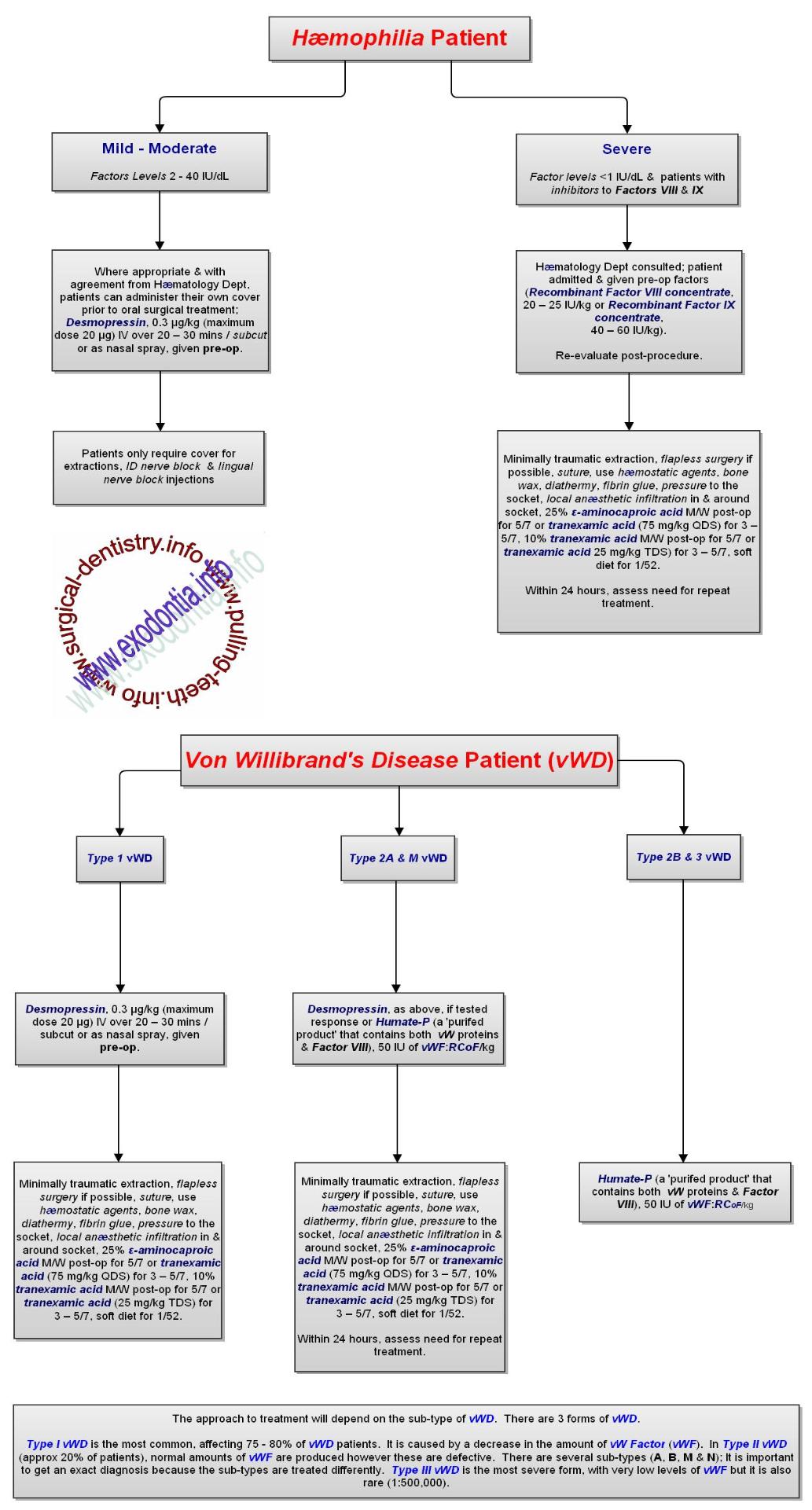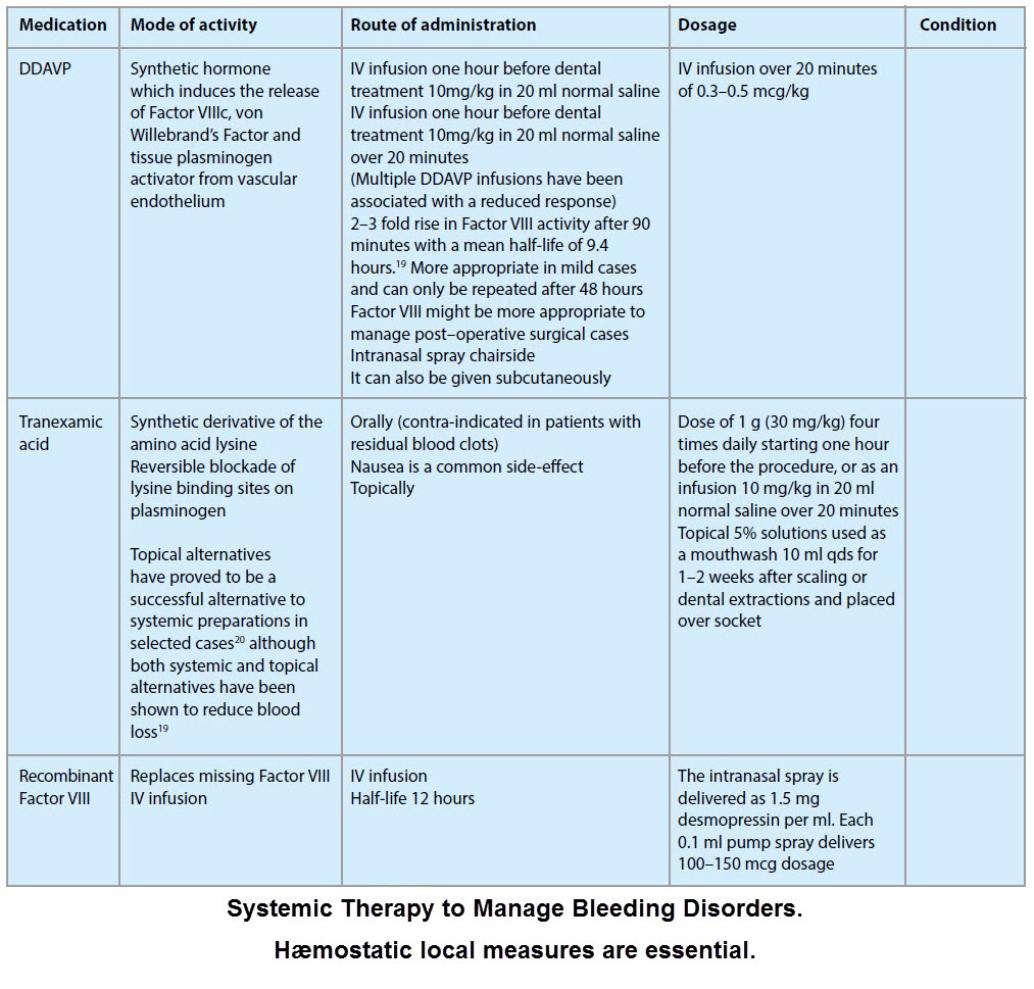Hæmophilia & Von Willebrand’s Disease & Oral Surgery
Patients with Hæmophilia (Factors VIII & IX Deficiencies) & Von Willebrand’s Disease
Hæmophilia is a group of hereditary genetic disorders that impair the body’s ability to control coagulation (blood clotting).
Hæmophilia A (Clotting Factor VIII deficiency) is the most common form of the disorder (1 in 5,000 – 10,000 male births).
Hæmophilia B (Clotting Factor IX deficiency) is rarer than Hæmophilia A, occuring in around 1 in about 20,000 – 34,000 male births.
Hæmophilia lowers blood plasma clotting factor levels of the coagulation factors needed for normal coagulation. When a blood vessel is injured, a clot does form but the missing coagulation factors prevent fibrin formation, which is necessary to maintain the blood clot.
A hæmophiliac does not bleed more intensely than a person without it but can bleed for a much longer time. In severe cases, even a minor injury can result in bleeding that can last days – weeks or there is incomplete healing. In areas such as the brain or inside joints, this can be fatal or permanently debilitating.
Useful Articles & Websites
St James Hospital, Dublin. Haemophilia & Dental Care
UK Haemophilia Centre Doctors’ Organization
J Dent Res 2005. Hereditary Blood Coagulation Disorders – Management and Dental Treatment
World Federation of Hæmophilia 2005. Guidelines for the Management of Hæmophilia
Canadian Hæmophilia Society 2007. All About von Willebrand Disease
Treatment of Hæmophilia 2008. Oral Care for People with Hæmophilia or a Hereditary Bleeding Tendency
N Engl J Med 2009. Clinical Problem Solving. A Bloody Mystery (Acquired von Willebrand’s Disease)
Barts & the London NHS Trust 2010. Dental Management of Haemophilia Patients
N Engl J Med 2012. Factor XIII in the Treatment of Hemophilia A


